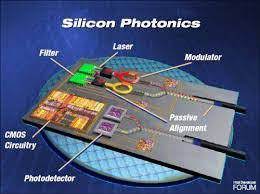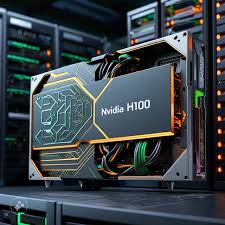Computers that process information using light rather than electricity, which were once considered research projects, are gaining pace, and businesses that have mastered the engineering hurdle of exploiting photons in chips are receiving significant funding.
Ayar Labs, a startup researching silicon photonics technology, announced on Tuesday that it had raised $130 million from investors including chip giant Nvidia Corp.
While transistor-based silicon chips have enhanced processing power tremendously over the last few decades as transistors have shrunk to the width of a few atoms, further decreasing them is difficult. Not only is it difficult to create something so small, but signals might flow between them as they get smaller.
Moore’s law, which predicted that the density of transistors on a chip would double every two years, lowering costs, is slowing, forcing the industry to explore new solutions to meet the growing demands of artificial intelligence computing.
Silicon photonics businesses raised over $750 million last year, according to data firm PitchBook, more than doubling from 2020. It was around $18 million in 2016.
In an interview with reporters, Ayar Labs CEO Charles Wuischpard said, “A.I. is developing like mad and taking over huge areas of the data center.” “The challenge of data transmission and the energy consumption associated with that data mobility is a huge, huge concern.”
The problem is that many large machine-learning algorithms require hundreds or thousands of processors to run, and current electrical technologies impose a speed limit on data transmission between chips or servers.
For decades, light has been used to transfer data over fiber-optic cables, including undersea cables, but getting it to the chip level has been difficult because electronics that create or control light are not as easy to compress as transistors.
Brendan Burke, a senior emerging technology analyst at PitchBook, forecasts that silicon photonics will become mainstream hardware in data centers by 2025, with a market value of $3 billion, equal to the market size of A.I. graphic chips in 2020.
Apart from connecting transistor chips, startups that use silicon photonics to develop quantum computers, supercomputers, and chips for self-driving cars are also raising a lot of money.
PsiQuantum has raised $665 million thus far, despite the fact that quantum computers are still years away from altering the world.
Lightmatter, which develops light-based processors to accelerate AI workloads in the data center, has secured a total of $113 million. The company plans to release its chips later this year and begin testing with customers shortly after.
Luminous Computing, a firm-sponsored by Bill Gates that is constructing an AI supercomputer using silicon photonics, has raised a total of $115 million.
This technology is being advanced by more than just startups. Semiconductor companies are also preparing to apply their silicon chip manufacturing capabilities in photonics.
Collaboration with PsiQuantum, Ayar, and Lightmatter, according to GlobalFoundries Head of Computing and Wired Infrastructure Amir Faintuch, has helped build up a silicon photonics manufacturing platform for others to exploit. In March, the platform was introduced.
Peter Barrett, the founder of Playground Global, a venture capital firm that has invested in Ayar Labs and PsiQuantum, is optimistic about the long-term potential for silicon photonics in computing but acknowledges that there is still a long way to go.
“What the Ayar Labs guys do so well,” he explained, “is they addressed the data connectivity problem for traditional high-performance (computer).” “However, we won’t have pure digital photonic compute for non-quantum systems for a long time.”

















